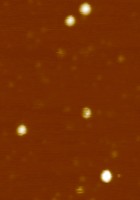Commentary
 fascinating
paper in the journal
Scientific Reports (“Different Brain Regions are Infected with Fungi
in Alzheimer's Disease” by Pisa, Alonso, et al.) proposes that Alzheimer's
disease (AD) is caused by a fungal infection in the brain. From their abstract:
fascinating
paper in the journal
Scientific Reports (“Different Brain Regions are Infected with Fungi
in Alzheimer's Disease” by Pisa, Alonso, et al.) proposes that Alzheimer's
disease (AD) is caused by a fungal infection in the brain. From their abstract:
“Different brain regions including external frontal cortex, cerebellar hemisphere, entorhinal cortex/hippocampus and choroid plexus contain fungal material, which is absent in brain tissue from control individuals. Analysis of brain sections from ten additional AD patients reveals that all are infected with fungi. Fungal infection is also observed in blood vessels, which may explain the vascular pathology frequently detected in AD patients.”
The idea of AD being an infection of some sort is not new. Because inflammation is a characteristic feature of AD, many researchers have suggested that AD could be caused by an infectious agent. The suspects include herpesvirus, blue-green algae, bacteria (including our old friend Treponema spp.) from dental abscesses, and many others. None has ever held up.
Perhaps the most compelling theory is that beta-amyloid, a small fragment of a big protein called APP, can act as a prion particle. A prion is a misfolded protein that can act as an infectious agent; once formed, it transmits the disease to other cells. Prions are known to cause Creutzfeldt-Jakob disease (CJD, a prion disease similar to BSE or mad cow disease), so the theory has gotten a lot of attention, though it is highly controversial.
Prions could also be responsible for Parkinson's disease and Huntington's disease. Yet in Alzheimer's, Parkinson's and especially in frontotemporal dementia, there are some patients who have inherited the disease, which means that a genetic defect is responsible, so researchers have tended to be skeptical of the prion theory of AD.

Spherical clumps of beta-amyloid, known as amylospheroids, photographed with an atomic force microscope. Scale is 0.75 × 0.50 microns.
The term prion has multiple meanings: besides the generic meaning used here, there is also a prion protein PrPc, which is an important protein found in the brain. It seems to be involved in memory or synaptogenesis. When misfolded, it is called the scrapie form PrPSc. PrPSc may act as a template to induce misfolding of normal PrPc. Mutations in PrP may increase the rate of misfolding, causing transmissible spongiform encephalopathies such as BSE and CJD[1].
The beta-amyloid that you buy in the store or that your parents put in your Christmas stocking is hardly toxic at all; neither are the big insoluble amyloid plaques. But those spherical medium-size clumps are deadly poison to nerve cells. If an amyloid clump was able to convert the harmless type into these clumps, we might think of it as a sort of infection.
That's the theory, anyway. The problem with beta-amyloid, of course, is that antibody therapy to eliminate it has little or no effect on the disease. That could mean the antibody just isn't reaching the clumps, or maybe it's getting there too late. Or maybe beta-amyloid is not the cause at all.
That's why the fungus idea is so appealing. Fungi produce mycotoxins, which are toxic at extremely low levels. Fungi produce many toxins, such as fusarium toxins (e.g. trichothecenes, as in the famous Yellow Rain fiasco) and ergot alkaloids, which have strong CNS and vascular effects. However, the time course for fungal infections is different than that of AD and PD, and of course fungi don't just attack older people, so there would have to be another factor, like decreased resistance with age.
In AD, large amounts of the beta-amyloid protein accumulate in the brain. Despite many years of investigation, its purpose and function are a mystery. Pisa et al. hypothesize that beta-amyloid acts as an antifungal agent, and amyloid is just the brain's way of defending itself. Beta-amyloid strongly binds metal ions like copper, so one might even speculate about the formation of hydroxyl radicals through the Cu2+/H2O2 reaction. Hydroxyl radical would be highly toxic, though nonspecific, and would be just as likely to kill neurons as fungi.
Some people have made much of the fact that these researchers are in Spain, the implication being that American and British scientists are resistant to new ideas, and maybe even suppressing them. Sigh.
Unfortunately for the theory, the same research group in the past also published papers suggesting fungus as a cause of ALS and multiple sclerosis. So until someone else repeats these experiments, there are at least three alternative possibilities to be ruled out first:
- Some of their patients were misdiagnosed.
- Fungal infection is opportunistic, and not causally related to any of the diseases.
- Their laboratory is in serious need of a good cleaning.
And finally, the acid test: somebody will have to prove it by injecting fungus extracted from one patient into another and showing that it produces the disease, and then (hopefully) curing them with an antifungal agent. But first, we have to wait for confirmation of the Spanish lab's provocative findings.
1. Flechsig E, Weissmann C. Curr Mol Med. 2004 Jun;4(4):337-53. The role of PrP in health and disease. Abstract
